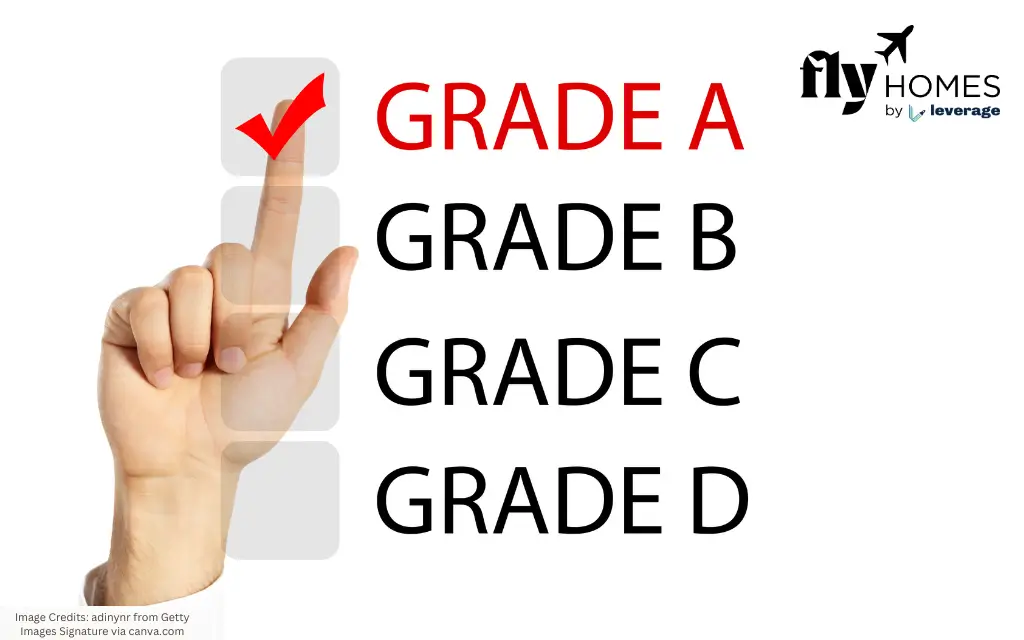Studying in Canada is a dream for many students, but understanding the grading system in Canada can be confusing. Unlike India, where percentages are common, Canada uses letter grades and GPA (Grade Point Average) to assess academic performance.
Don’t worry—I’ll break it down for you in simple terms. By the end of this guide, you’ll know exactly understand the grading system in canada and how the grading system works in high schools, colleges, and universities in Canada.
Table of contents
How Does the Grading System in Canada Work?
If you’re planning to study in Canada, understanding how grades work is crucial. Unlike in India or other South Asian countries, where percentages are the standard, Canada uses a letter grading system along with a GPA (Grade Point Average). This system may seem confusing at first, but once you break it down, it’s easy to follow.
Letter Grades and Their Meaning
In Canada, instead of just percentages, universities and colleges use letter grades (A, B, C, etc.) to evaluate your performance. Each letter corresponds to a percentage range and a GPA score. Here’s a breakdown of how it works:
| Letter Grade | Percentage Range | GPA (Out of 4.0) | Meaning |
| A+ | 90–100% | 4.0 | Excellent |
| A | 85–89% | 3.7 | Very Good |
| A- | 80–84% | 3.3 | Very Good |
| B+ | 75–79% | 3.0 | Good |
| B | 70–74% | 2.7 | Above Average |
| B- | 65–69% | 2.3 | Satisfactory |
| C+ | 60–64% | 2.0 | Average |
| C | 55–59% | 1.7 | Below Average |
| C- | 50–54% | 1.3 | Pass |
| F | Below 50% | 0.0 | Fail |
Also Read:
- Biggest Culture Shock in Canada: Stages, Management Tips
- Manners and Etiquette in Canada: Language, Culture, and Tips
Grading System in Canada Percentages
If you’re used to the Indian percentage system, converting your marks to Canadian grades can be confusing. The table below gives you a rough idea of how percentages compare to Canadian letter grades.
| Indian Percentage | Canadian Grade |
| 90–100% | A+ (Excellent) |
| 80–89% | A (Very Good) |
| 70–79% | B+ (Good) |
| 60–69% | B (Above Average) |
| 50–59% | C (Pass) |
| Below 50% | F (Fail) |
Tip: Many universities in Canada do not have a fixed conversion system, so it’s always a good idea to check with your university.
Grading System in Canadian Universities
The university grading system in Canada is slightly different from that of high schools. Each university has its own way of calculating GPA, and the weightage of assignments, exams, and projects may vary. Here’s what you should know:
- A+ (90-100%) – Excellent Performance: This is the highest grade and is very difficult to achieve. You need to score almost perfect marks in exams, assignments, and projects.
- A / A- (80-89%) – Very Good Performance: This is an ideal grade range for students who want to apply for postgraduate studies (MS, MBA, etc.).
- B+ / B / B- (65-79%) – Good to Satisfactory Performance: B or B- (65-74%) means you are doing satisfactory work, but there is room for improvement. If you plan to apply for higher studies, you should aim for a B+ or higher.
- C+ / C / C- (50-64%) – Passing but Below Average: If you are scoring in this range, you may need to work harder in assignments and exams. Many universities require at least a C (55-59%) to pass a course.
- F (Below 50%) – Failing Grade: An F means failure and will not be counted for your degree. You will need to retake the course or choose an alternative subject.
Consider the following things,
- Most Canadian universities follow a 4.0 GPA scale.
- Assignments, exams, and class participation all contribute to your final grade.
- Failing a course (F) means you have to retake it or take an alternative subject to complete your degree.
- To graduate, you typically need a minimum GPA of 2.5–3.0.
Canadian High School Grading System
If you’re planning to study in a Canadian high school, it’s important to understand how the grading system works. While it follows a letter grading system similar to universities, there are some key differences. Let’s break it down step by step.
1. How Are High School Grades Calculated?
In Canada, each component contributes to your overall grade, and final marks are usually a combination of coursework and exam scores. High school students are graded based on:
- Assignments & Homework – Regular tasks given by teachers.
- Class Participation – Some teachers award marks for attendance and engagement.
- Projects & Presentations – Research work and group activities.
- Midterm & Final Exams – Major tests that significantly impact final grades.
2. High School Grading Scale in Canada: High schools in Canada use the same letter grading system as universities.
3. Minimum Passing Grade in High School
- In most Canadian high schools, a C- (50-54%) is the minimum passing grade.
- If you score below 50%, you fail the subject and may need to repeat the course.
- Universities usually require at least a C+ (60%) in core subjects like Math and English for admission.
4. Credit System for Graduation: Unlike in South Asian countries, where students pass based on overall marks, Canadian high schools use a credit system. This is how credits work:
- Each subject is worth a certain number of credits (e.g., Math = 1 credit).
- To graduate from high school, you must earn a required number of total credits (varies by province).
- If you fail a subject, you don’t earn the credit and might need to retake it.
5. Differences Between Provinces: Canada has 10 provinces and 3 territories, and each has its own education system. While grading is similar across Canada, some provinces have unique rules:
- Ontario – Uses OSSD system with a minimum 30-credit requirement.
- British Columbia – Uses a percentage-based grading system instead of letters.
- Quebec – High school ends in Grade 11, followed by CEGEP (a pre-university program).
- Alberta – Uses Diploma Exams (final exams) that count for 30% of the final grade.
Also Read:
- Average Salary for Indian MBA Fresher in Canada [2025]
- Canada PR Requirements: Eligibility, Documents and Tips!
Grading System in Canada from India
If you’re coming from India to study in Canada, you might be wondering how your grades will be evaluated. Indian universities and schools use a percentage system, whereas Canada follows a GPA (Grade Point Average) and letter grading system. Let’s break it down step by step.
How Do Indian Grades Convert to Canadian GPA?
Most Canadian universities use WES (World Education Services) or their own internal system to convert Indian percentages to Canadian GPA. Here’s a rough conversion guide:
| Indian Percentage | Canadian Equivalent (GPA out of 4.0) | Letter Grade |
| 80% and above | 3.7 – 4.0 | A to A+ (Excellent) |
| 70 – 79% | 3.0 – 3.7 | B to B+ (Good) |
| 60 – 69% | 2.3 – 3.0 | C to B- (Satisfactory) |
| 50 – 59% | 1.7 – 2.3 | C- to C+ (Pass) |
| Below 50% | 0.0 – 1.7 | F (Fail) |
Important Notes:
- Some universities may have slight variations in their conversion.
- Higher-ranked universities may have stricter requirements for GPA conversion.
- WES (World Education Services) is the most commonly used credential evaluation service in Canada.
What Is the Minimum Percentage Required for Admission?
The admission requirements vary based on the level of study. Below are the required minimum percentages as per the undergraduate and postgraduate courses:
For Undergraduate Courses (Bachelor’s Degree)
- Most Canadian universities require at least 60% in 12th grade.
- Competitive programs (like Engineering or Business) may require 70% or higher.
- English proficiency tests like IELTS (minimum 6.5 bands) or TOEFL are also required.
For Postgraduate Courses (MS, MBA, etc.)
- A minimum of 65% – 75% (or CGPA 7.0+) in your Bachelor’s degree is preferred.
- For top universities, you may need a higher percentage (75%+ or CGPA 8.0).
- Some programs require GRE/GMAT scores, especially for MBA and Engineering courses.
Pro Tip: If your percentage is slightly lower than the requirement, having strong work experience, extracurricular activities, and a good Statement of Purpose (SOP) can help boost your chances of admission.
Will My Marks Affect My Job Opportunities in Canada?
Yes! Many employers in Canada consider your GPA when hiring fresh graduates.
For Technical Jobs (Engineering, IT, Science, etc.)
- A high GPA (3.0+) can help you land better jobs.
- Companies may ask for your university transcripts to check your grades.
For Business & Management Jobs
- Many finance and consulting firms prefer candidates with a strong academic record (B+ or higher).
- Some companies also consider GMAT scores for MBA graduates.
For Healthcare & Research Roles
- If you’re applying for jobs in medicine, pharmacy, or research, grades matter a lot!
- A high GPA (3.5+) can increase your chances of securing a good position.
Tips for Indian Students to Succeed in Canadian Universities
Studying in Canada is exciting, but it can also feel overwhelming at first. If you’re an Indian student heading to a Canadian university, these simple tips will help you adjust faster, stay focused, and make the most of your academic journey.
1. Embrace Cultural Differences: Canada is culturally diverse, so be open to new perspectives and lifestyles. Embracing different cultures helps you build friendships, participate confidently in class, and adapt faster to your new environment without feeling isolated or homesick.
2. Improve Communication Skills: Strong English skills are essential for academic success. Participate in group discussions, ask questions in class, and don’t hesitate to seek help. Practising your spoken and written English will boost your confidence and help you stand out.
3. Manage Your Time Wisely: Canadian universities follow a fast-paced schedule. Use planners or digital calendars to stay on top of classes, assignments, and part-time jobs. Avoid last-minute stress by spreading out your study sessions and maintaining a balanced routine.
4. Use Campus Resources: Take full advantage of support services like writing centres, tutoring labs, mental health counselling, and career guidance. These are free for students and can really help if you’re struggling academically or personally.
5. Build a Social Circle: Don’t just stick to familiar groups. Join student clubs, attend cultural events, or volunteer. Having friends from different backgrounds can make you feel more connected and supported during your time in Canada.
How to Improve Your Grades in Canada
If you’re struggling with your grades, don’t worry! Adjusting to a new education system can be challenging, but with the right strategies, you can improve your academic performance. Here are some practical tips to help you succeed in Canadian universities and colleges.
1. Attend Classes Regularly
- Many professors track attendance and class participation as part of your final grade.
- Missing classes means missing important lectures, discussions, and exam hints.
- Some courses have mandatory attendance policies, so skipping too many can affect your grade.
2. Complete Assignments on Time
- Late submissions can lead to grade deductions (some professors reduce marks for every late day).
- Assignments carry significant weight in your final grade (sometimes 40–50%).
- Regular assignments help you revise concepts before exams.
3. Seek Help from Professors & Tutors
- Canadian universities encourage students to ask questions and seek help.
- Professors have office hours when you can clarify doubts.
- Many universities offer free tutoring and academic support services to help students with difficult subjects.
4. Form Study Groups
- Studying in groups helps you understand complex topics better.
- You can exchange notes, quiz each other, and discuss difficult concepts.
- Study groups can keep you motivated and reduce procrastination.
5. Manage Your Time Well
- Many international students juggle studies, part-time jobs, and social life.
- Poor time management can lead to missed deadlines and stress.
- Creating a balanced schedule helps you stay on top of your coursework.
- Avoid last-minute cramming—study a little every day to stay prepared.
6. Make Use of University Resources
- Canadian universities provide free access to libraries, research databases, and study spaces.
- Some offer career counselling, academic advisors, and mental health support.
- Using these resources can boost your grades and reduce stress.
Understanding the grading system in Canada is important for your academic success. Whether you’re in high school or university, or coming from India, knowing how grades work will help you plan better.
If you’re still unsure about your grades, talk to your university advisor. They can guide you on improving your GPA and making the most of your studies in Canada.
Hope you liked reading our blog on the grading system in Canada. For a stress-free stay during your study abroad adventure, choose Fly Homes. Call 1800572118 to reserve your ideal accommodation abroad with ease.
FAQs
The grading system in Canada varies by province and institution. Most schools use letter grades (A, B, C, D, F) with percentage ranges. Universities often use a Grade Point Average (GPA) on a scale of 0 to 4.
A passing grade depends on the institution. In most schools and universities, 50% (D) is the minimum passing grade. However, some programs require at least 60% (C) to pass.
A grade of A (80-100%) is excellent, while B (70-79%) is good. A C (60-69%) is average, and anything below may require improvement.
GPA is calculated by converting letter grades into points. For example, A = 4.0, B = 3.0, C = 2.0, and so on. The total points are divided by the number of courses taken.
A percentage is the actual marks received in a course, while GPA is the average of grades on a scale (usually 0 to 4). Universities use GPA for overall academic performance.
No, grading systems vary between universities and provinces. Some use percentage-based grading, while others use letter grades or GPA. Always check your university’s grading policy.
High schools in Canada use a percentage-based grading system. The letter grades are typically: A (80-100%), B (70-79%), C (60-69%), D (50-59%), and F (below 50%).
Yes, 70% is considered a good grade. It falls in the B range, which is above average in most Canadian schools and universities.
The highest GPA is usually 4.0, which corresponds to an A or 90-100%. Some universities may use a 4.33 or 9.0 scale, so always check specific grading policies.
Universities evaluate international transcripts using equivalency charts. Some may require a WES (World Education Services) evaluation to convert grades into the Canadian system.
Follow Us on Social Media




























